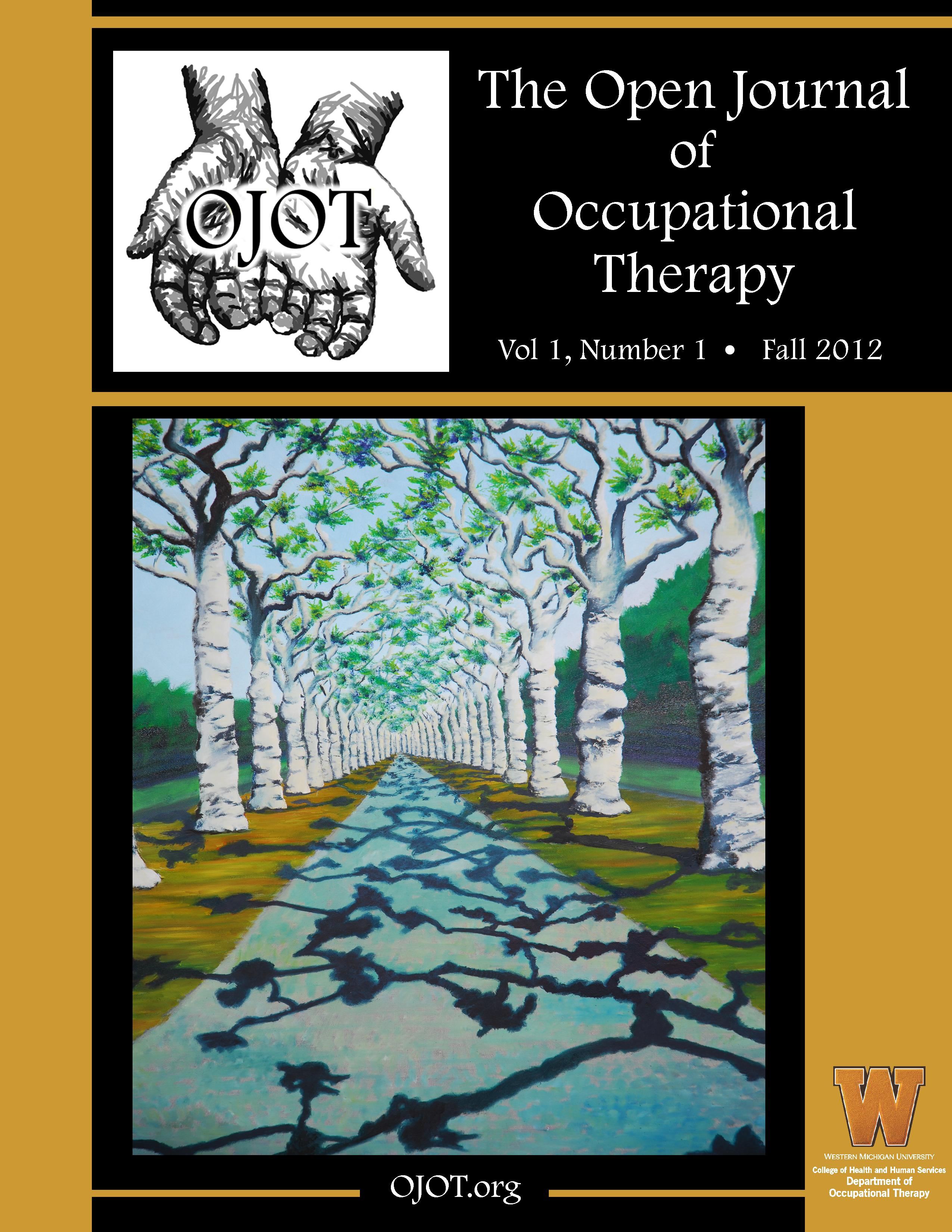ScholarWorks > HHS > OT > OJOT > Vol. 5 > Iss. 4 (2017)
Credentials Display
Angela K. Boisselle, PhD, OTR, ATPMary F. Baxter, OT, PhD, FAOTA
Abstract
This study was part of a larger study to describe how master’s of occupational therapy (MOT) students define and perceive their own creative thinking across the academic program. This study involved a cross-sectional quantitative study based on the self-reflective creative thinking surveys completed by the MOT students at Texas Woman’s University (N = 136). Principal component analysis (PCA) was used to reduce a large number of variables by finding which variables are redundant and measuring the same construct. The PCA resulted in three new components accounting for 68% of the variance. Three ANOVAs were conducted to explore possible differences in the students’ perceptions about creative thinking during phases of the program. This study did not reveal any significant differences among the students across the program regarding their perceptions of creative thinking. However, analysis showed rich information about the students’ perceptions of creativity. Three new components were created in response to the PCA. Overall, the students demonstrate high levels of agreement that the MOT students value creative thinking, believe it can be learned, and believe that it is important for occupational therapy practice. This study can serve as a basis for a larger study to develop assessment and/or MOT curriculum design.
Recommended Citation
Boisselle, A. K., & Baxter, M. F. (2017). Master’s of Occupational Therapy Student Perceptions of Creative Thinking Across the Academic Program. The Open Journal of Occupational Therapy, 5(4). https://doi.org/10.15453/2168-6408.1314


